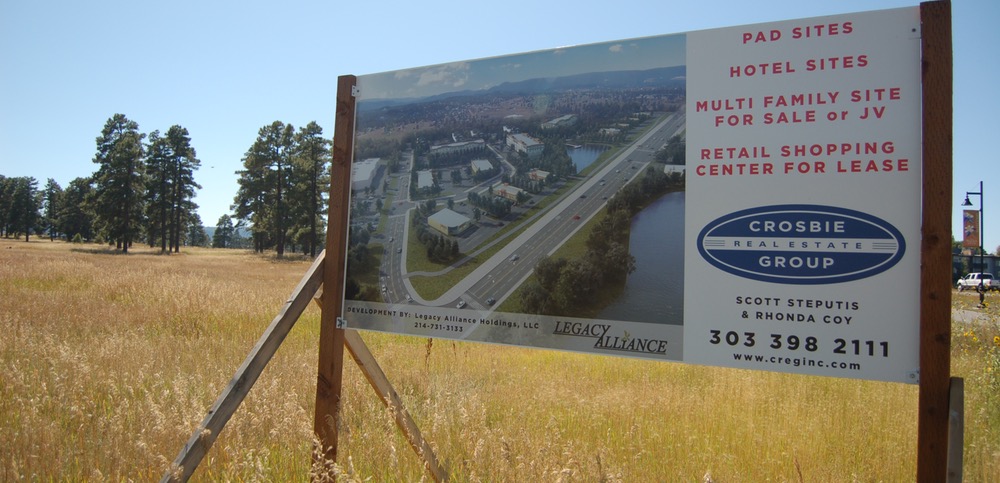We noted, back in Part One, that the State of Colorado annually distributes about $6.6 billion in tax incentives to businesses — mostly to very wealthy corporations like Walmart, Verizon, CenturyLink, Suncor Energy, Andarko Petroleum, United Airlines…
The list goes on.
Each individual incentive might not be enormous, but taken as a whole, the incentives equal an amount larger than the state spends, annually, on public schools and higher education put together. (We already shared that thought, back in Part Two.)
We also shared this graph, produced by the Colorado Center on Law & Policy, dated July 2018:
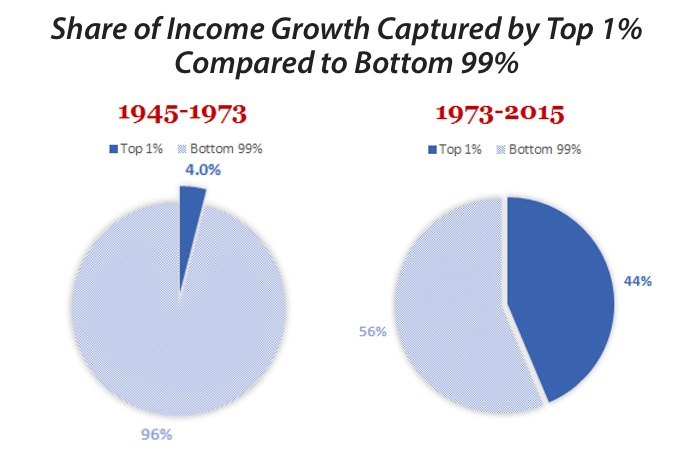
Could it be… there’s a connection between taxpayer-funded business incentives and a disappearing middle class? Some might say so, even though the supposed reason for tax subsidies is to create a healthier economic climate. Seems the exact opposite has been happening.
But well-meaning governments often produce the exact opposite of what they say they want for us. The proposed ‘Urban Renewal Authority’ Tax Increment Financing (TIF) scheme, currently being sold to our local government entities by Springs Resort principal David Dronet, might be a perfect example of a proposal that would produce the opposite of what we all want.
About 35 community members attended Mr. Dronet’s Wednesday, September 11 presentation at the Springs Resort conference room, where he gave a brief overview of how a TIF scheme works and why 27 acres of vacant, never-developed riverfront property would — in his mind, and in the minds of certain attorneys — qualify as “urban blight or slums” under CRS 31-25 — the Colorado Urban Renewal Authority law. (You can download the law here.)
Mr. Dronet then welcomed questions and comments from the audience, and I was thoroughly impressed by his ability to provide answers that support the idea of $79.7 million in tax incentives — subsidies that a TIF might be able to provide to the Springs Resort, apparently one of the more financially successful businesses in Pagosa Springs. The TIF scheme seems, on the surface, relatively harmless, as Mr. Dronet explains it, because the taxes in question — sales, property, lodging — are not currently generated on the 27 acres of vacant land he proposes to develop. (Except the property taxes, of course, on vacant land.)
The new neighborhood could, theoretically, be a vibrant part of downtown Pagosa, if it were developed. But Mr. Dronet stated with considerable conviction, on Wednesday evening, that it will never be developed unless the Town Council and the other government entities in Archuleta County are willing to provide 25 years of tax incentives. The tax subsidies would come only from the ‘urban renewal’ project area, so the subsidies would not be paid unless some type of development actually takes place.
So the community can’t lose on the deal… or so we are told.
A member of the Wednesday audience asked Mr. Dronet to give us the ‘worst case scenario,’ and was told that the worst case would be, the vacant land would get roads and utilities — paid for by the Springs Resort — and then would sit vacant for 25 years, and no TIF revenues would be generated. No tax incentives would be provided to reimburse the resort for its investment. We’d simply have another vacant subdivision. No cost to the taxpayers.
But that’s not exactly the worst case scenario. Things could, theoretically, get a lot worse than that, and I hope the taxing entities understand how badly things could turn out for the taxpayers.
If the Town Council chooses to ignore the obvious intent of CRS 31-25 — the Urban Renewal Authority law — and declares that vacant, undeveloped property qualifies as “blight and slums” and should no longer be paying taxes like the rest of us… well, folks… we have an awful lot of vacant, undeveloped property in Archuleta County.
For example. The Springs Resort URA proposal would conceivably cost the community $79.7 million in redirected taxes over 25 years.
Just down the road from the Springs Resort is the proposed Mountain Crossing subdivision — once the site of the San Juan Lumber Company — which has been sitting vacant for more than 25 years, just waiting to be developed.
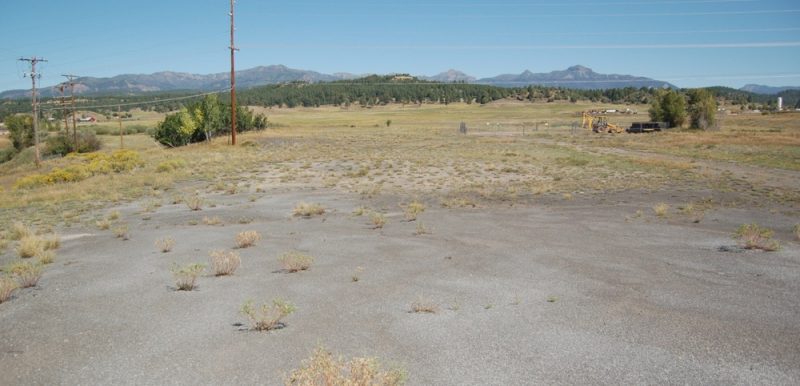
If 27 acres of pristine vacant land could cost the taxpayers $79.7 million, then would the vacant 110-acre Mountain Crossing subdivision — which actually was a blighted property at one point in time — be worth $320 million in lost TIF taxes?
If the vacant land that Mr. Dronet wants to see developed is classified as “blighted” by the Town Council, then we have literally thousands of pristine acres that could also qualify as “blighted” — and thus be eligible for TIF tax incentives, if that’s the direction future Councils want to take us. Because a municipal ‘Urban Renewal Authority’ doesn’t typically approve only one single project. According to its website, the Denver URA has approved 53 ‘renewal’ projects since it got started, decades ago.
The once-proposed 80-acre Lone Star Ranch, right across the river from Mountain Crossing, might be another excellent opportunity to give away tax revenues through a TIF scheme. Would that likely be worth $240 million in TIF tax incentives?
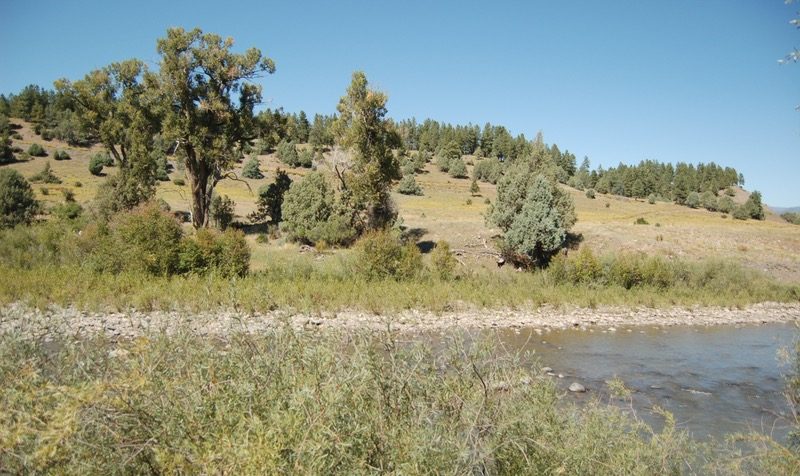
And how about the big, full-color sign that appeared recently across the road from our Walmart store, advertising a 23-acre mixed-use development planned by Texas-based Legacy Alliance?
“Pad Sites.” “Hotel Sites.” “Multi Family Site For Sale or Joint Venture.” “Retail Shopping Center For Lease.”
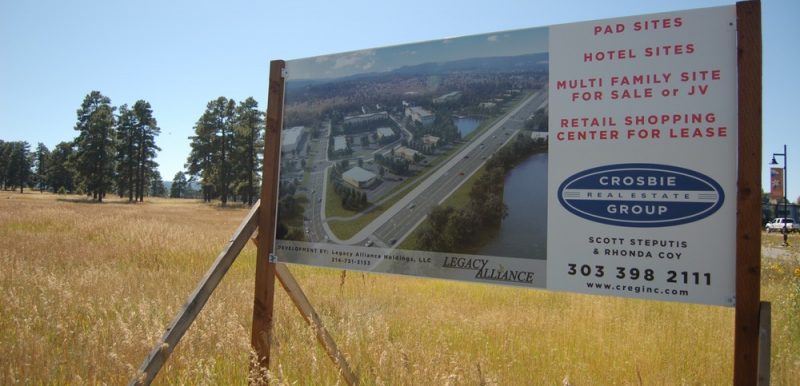
This sounds like exactly the same type of mixed-use development being proposed by Mr. Dronet — except that it has highway frontage, and is centrally located in the scenic uptown area, where most of the Pagosa population lives and works. And it’s right across the street from the most visited retail store in Pagosa.
Another great opportunity for our Town Council to give away $79 million in TIF tax money, to encourage even more low-wage jobs?
The worst case scenario is not a couple of vacant streets adjacent to the Springs Resort. The worst case scenario is $1 billion or more in taxpayer-funded corporate welfare provided to every future developer of vacant land willing to step up at a Town Council meeting and presents a glowing ‘economic impact’ report written by some consultant from Colorado Springs.
The worst case scenario is that this graph will look so much worse in 25 years:


